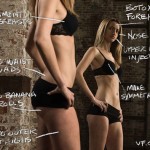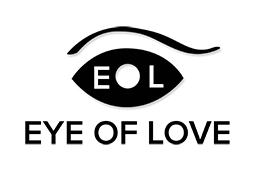 Are you one of the many women, like myself, who is tired of looking tired? Is there anything worse than being TOLD you look tired, even after you have gotten a solid 10 hours of sleep or come back from a relaxing week of vacation? Okay, lets face it these days many of us ARE tired. And how often do any of us get 10 hours of sleep or have a “relaxing” week off? But wouldn’t it be nice to look as if that were the case.
Are you one of the many women, like myself, who is tired of looking tired? Is there anything worse than being TOLD you look tired, even after you have gotten a solid 10 hours of sleep or come back from a relaxing week of vacation? Okay, lets face it these days many of us ARE tired. And how often do any of us get 10 hours of sleep or have a “relaxing” week off? But wouldn’t it be nice to look as if that were the case.
After being in the Aesthetic field for almost a decade, I have found that one of the most common areas that bring women in is their eyes. Whether it is wrinkles around or under the eyes, dark circles, hollowness or puffiness, the common complaint is that this area makes them look tired or older than they really are. It is also an area that, for many, begins to bother them at a very young age.
This is why there is a new miracle eye cream out every other day claiming to banish dark circles or eliminate puffiness. And it is also the reason that many of us have a graveyard of “eye creams past” that never truly accomplished what they said they would. The truth is that there are several potential causes for what we are visibly noticing around our eyes and that most of these are genetically predetermined and nearly impossible to eliminate with any topical preparations.
Puffiness, for instance, is most commonly a symptom of a fat pad, which in some begins to protrude or even herniate due to a weakened muscle below the eyelid. Even though this may exist from a very young age, we do not begin to notice it as much until we start to lose that cushion and support of the fat within our tear troughs and cheeks. Water retention due to some foods, alcohol or lack of sleep may cause this area to look worse. And some creams that dehydrate can provide a temporary improvement. However, to provide long-term results, the cause of the puffiness must be addressed.
No amount of eye cream is ever going to replace that volume lost from fat.
On the flip side of this, dark circles are usually a symptom of volume loss throughout the under eye (or tear trough) area. When we are younger, the cushion of the fat in this area masks the underlying vessels and also provides reflection of light. In as early as in our late 20’s, this is one of the first areas where facial fat loss is noticed. Discoloration caused by capillary bleeding from the underlying vessels becomes more noticeable. The hollowness causes increased shadowing and a lack of light reflection, which also causes darkness that can be difficult to correct with makeup as it tends to just collect in that depression. No amount of eye cream is ever going to replace that volume lost from fat. And unfortunately, even when we gain weight, it never seems to go back to the places that we would like to keep it.
There is, however, a light at the end of this depressing tunnel down which I am leading you. With all of the knowledge gained over the past decade as to the causes of facial aging, there are many treatment options available to either eliminate the causes or mask the symptoms of these conditions for a longer period of time. Surgical intervention may still be the best choice for people whose symptoms may be more advanced or for people looking for a more permanent option.
But for those who are looking to avoid surgery or for others who may not yet need it, there are still options available. Laser treatments can be used to improve discoloration in some instances, as well as to reduce wrinkling. Botox can help to improve wrinkling around the eyes or even to give a lift to the brows. Finally (and I can’t lie, one of my favorites) is Filler.
Even many plastic or oculo-plastic surgeons, who I have worked with over the years, are encouraging patients who are good candidates to begin treatment with fillers rather than more invasive options.
With even a small amount of filler to the tear trough and/or upper cheek, we are able to restore facial volume and therefore decrease shadowing, increase light reflection and camouflage the look of puffiness. Most patients feel and are told they look “less tired” or “more relaxed,” but still like themselves. And who doesn’t want that?
An initial consultation is the best way to determine which treatments may be the best for your individual needs or goals. As with any procedure, it is important to know that your provider has experience with all of these modalities so that they can best point you in the right direction and provide you with the best outcome and in the safest environment.






